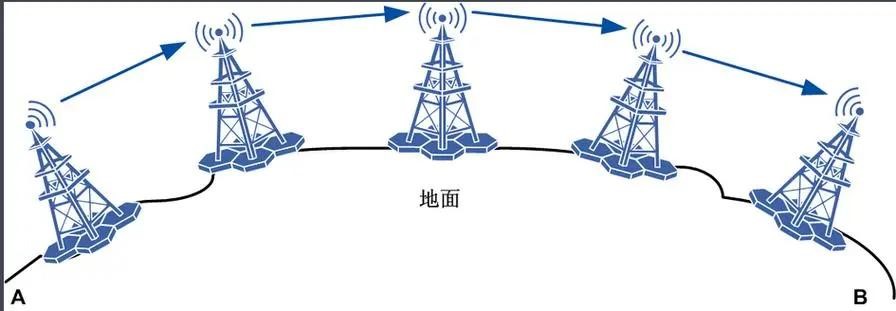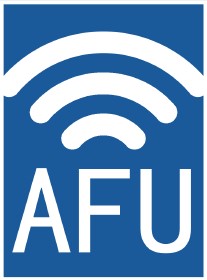Microwave antenna and base station antenna are common antenna types in wireless communication systems. This paper will introduce the definition, function, structure, characteristics, application and difference of microwave antenna and base station antenna in detail.
1. Definition and function of microwave antenna
Microwave antenna is a kind of equipment used to receive and send microwave signals, it is one of the core components of the communication system. Microwave antennas can convert electromagnetic waves into electrical signals and send them to the receiving device, and can also convert the received electrical signals into electromagnetic waves and send them out. It plays the role of signal transmission in wireless communication, and can realize the functions of wireless transmission and communication.
2. The definition and function of base station antenna
A base station antenna is a device that transmits signals through the air in a wireless communication system. Base station antennas are usually installed at a height, such as a building, tower, or mountaintop, and can provide a large signal coverage. The base station antenna receives the signal from the mobile device or user terminal, then transmits it to the base station device for processing, and finally sends the processed signal to the target device or user. Base station antenna is one of the key devices in wireless communication system, its role is to connect mobile devices and networks, and realize the transmission of signals.
3. The structure and characteristics of microwave antenna
The structure and form of microwave antenna are various, the common parabolic reflector antenna, horn antenna, compensated aperture antenna and so on. Microwave antenna is generally composed of antenna body, feeder, radiation element and reflection patch. The characteristics of microwave antennas are as follows:
1.) High frequency band: Microwave antennas mainly work in high frequency bands, and the frequency range is usually between 300MHz and 300GHz.
2.) Wide band: Microwave antennas have a large band width and can transmit signals in a relatively wide frequency range.
3.) High gain: The gain of microwave antennas is high, which can increase the distance and coverage of signal transmission.
4.) Strong directivity: Microwave antennas usually have strong directivity and can focus the signal on a specific direction.
4. The structure and characteristics of the base station antenna
The structure and form of base station antenna are also diverse, common tower antenna, plate antenna, mast antenna and so on. The characteristics of the base station antenna are as follows:
1.) Multi-frequency band: the base station antenna can work in multiple frequency bands and can cover a variety of wireless communication standards, such as 2G, 3G, 4G, 5G, etc.
2.) High power transmission: Base station antennas usually need to have a high power transmission capability to achieve a wide range of signal coverage.
3.) Wide coverage: The coverage of the base station antenna is large, which can cover an area of tens to hundreds of square kilometers.
4.) Multi-antenna system: Base stations are usually equipped with multiple antennas to provide better signal quality and capacity.
5. Application fields of microwave antenna
Microwave antennas are widely used in wireless communication, satellite communication, radar signal reception and other fields. For example, in wireless communication, microwave antennas are used in mobile communication base stations, satellite communication receiving stations, wireless local area networks and other equipment. In radar system, microwave antenna as radar signal receiving and transmitting device, can realize the target monitoring and detection.
6. Application field of base station antenna
Base station antenna is the key equipment in mobile communication system, which is widely used in mobile communication base station, cellular network, Internet of things and other fields. Base station antenna can realize the reception and forwarding of signals sent by mobile devices, and provide communication services. The base station antenna has a large coverage area and can transmit signals in a large geographical area to achieve seamless coverage.
7. The differences between microwave antenna and base station antenna
1.) Definition and function: Microwave antennas are used to receive and transmit microwave signals, while base station antennas are used to receive and forward signals from mobile devices.
2.) application fields: Microwave antennas are mainly used in wireless communication, satellite communication, radar and other fields, while base station antennas are mainly used in mobile communication base stations, cellular networks, Internet of things and other fields.
3.) operating frequency band: microwave antennas work in high frequency bands (300MHz to 300GHz), while base station antennas can work in multiple frequency bands, covering a wider range of communication standards.
4.) structural characteristics: the structure of the microwave antenna is diverse, with a high bandwidth and strong directivity; Base station antennas are usually equipped with multiple antennas, with wide coverage and high power transmission capacity.
To sum up, there are great differences between microwave antenna and base station antenna in definition, function, structure, characteristics and applications. Understanding their differences is very important for understanding the working principle and application scenarios of wireless communication systems.
AFU TELECOM is a Wireless Telecom Solution provider with professional supporting on our customers' business globally. AFU TELECOM is always focusing on and specializing in O-RAN, Marco Cell, Small Cell, Active DAS, Public Safety and Optics Network Solutions including Antennas, Filters/Combiners/TMAs, RF Repeaters, Optics Devices and Site Accessories, especially AFU Core Team are very professional in wireless telecom with rich experience on our product portfolios. The Highest Priority of AFU TELECOM is Customers' Satisfaction and Product Quality. AFU MISSION IS TO CONNECT EVERYTHING!
Mainly products including SISO Indoor Flat Omni Ceiing Antennas, Indoor 4-Port Flat Ceiling Antennas, Outdoor Directional Antennas, High Gain Directional Antennas, DAS Public Safety products, etc. Communicating with a professional team and this will improve the efficiency. We will provide the most suitable solution to you and you will be satisfied with it. If there any need and feel free to contact us for further information!


